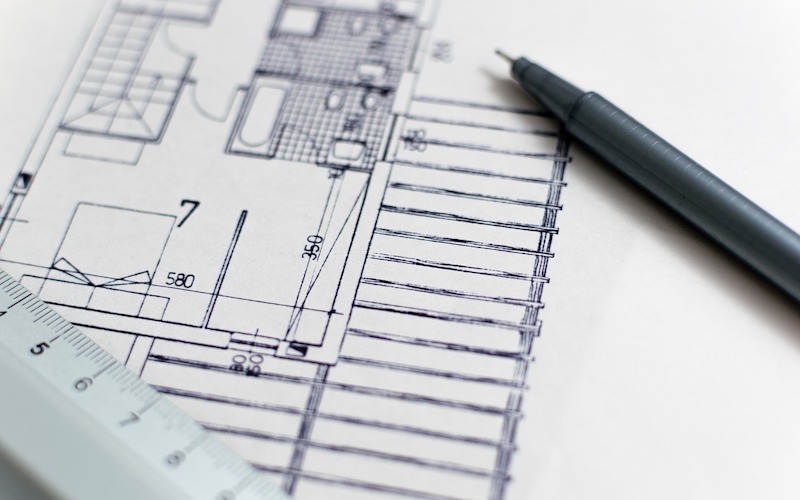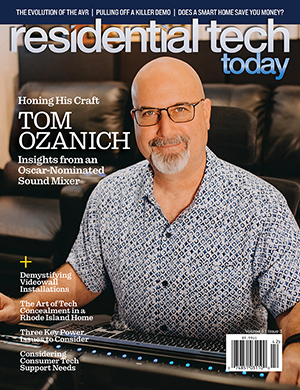At Cloud9 Smart, one of our guiding pillars is that, “In our interaction with clients, trades, and each other, we focus on the collective goal.” Surely, the collective goal of our industry is to work together with our clients and other trades to build the best systems that we can. To that end, we work every day to engage with the architecture and design community in our hometown, New York City, and we have developed a catalog of courses to present to architects for continuing education credit, specifically looking at smart home design.
Our most successful course is the one that we refer to as “Smart Home 101.” In it, we discuss the goals of our work as technologists, and how we would like to work better together with our design and architect partners on projects.
Start with Lighting and Shades Control in Your Smart Home Design
The three central themes of architecture are durability, utility, and beauty. Coming from the world of electronics, where newer is always better, it is not hard to see how an impasse exists between our industries. As our technology has improved, however, we are encountering pieces that meet those themes. A modern lighting control system can last decades (durability), while improving the look of a space (beauty), and making it easier to use (utility).
Our American Institute of Architects-approved course is designed on the basic premise that we are going to explore together the various technologies that meet these standards. We delve into our experiences with each, and how early planning can make integration of such devices unobtrusive to the design process, and improve the final product. If something is going to be in your design, it should be beautiful, functional, and durable.
The first topic we discuss is lighting – both natural and artificial – as well as the manner in which it can be controlled. We touch on LED lighting and are open about the troubles faced in dimming these fixtures, as well as the various ways we have to ameliorate these issues with proper design and planning. From here we move on to hardware, showing examples of Lutron Palladiom and Forbes & Lomax keypads, switches, and dimmers. We then introduce the concept of a scene and a single device controlling several others. This is followed up by weighing the benefits and pitfalls of wired and wireless connectivity. These are important concepts in our overall discussion, so we are laying the groundwork for later topics, like networking and control systems.
We close out lighting and shading with the idea of natural light being the final light source in a home. Architects understand and work with natural light extensively. That being said, the advantages of automated control are often something they had not considered before. We discuss the benefits to the longevity and durability of their designs and their client’s material investment by controlling UV light, the obvious comfort advantages, and the new design ideas that this may open up to them. A bedroom with windows on four sides is far more livable if you do not need to be concerned with the number of shades or drapes that must be moved by the occupant. During this topic, we pass around samples from Lutron with higher-end finishes. These may not be materials that the architects would specify for their project, but it emphasizes that smart shades can be attractive and functional.
How We Approach Audio
We begin our audio technology discussion simply by exploring the basics of speakers – dispersion and frequency reproduction of various driver sizes. We then move to the types of speakers that blend into the look of a room, while still providing a clean and comfortable audio experience. We go over the custom sound bar solutions from Leon as well, which allow audio to appear to emanate from the screen while not adversely impacting the look of the room in a significant way. For distributed audio, Sonance and James are our main vendors for discrete speaker systems that are meant to match high-end recessed lighting. We make a point of carrying grilles for several sizes and finishes from them to discuss, comparing them to similarly-sized lighting fixtures. Finally, we cover invisible speakers. Here, Sonance and Stealth have excellent materials to utilize.
Invisible speakers represent a fantastic opportunity to demonstrate the commitment to the three themes, as they are beautiful, durable, and utilitarian. We cover typologies where invisibles are absolutely invaluable – places where occupants entertain and impress. We also talk about ceilings with designed, uneven fixtures, or walls with art that require splitting the woofer and midrange/tweeter. These are all opportunities to show that you care about the client’s experience as well as the design, and that you have experience working with design partners.
In spite of Cloud9 Smart’s very city-centric clientele, our architect partners usually offer design services for projects outside the city, so we do as well. That’s why we take a moment to discuss outdoor audio solutions, covering the ideal placement and solutions for outdoor audio, echoing our discussion of indoor discrete systems.
How Does a TV Fit into Your Design?
Our next topic is the television. We do not discuss 4K, HDR, or smart features. Instead, we engage from the perspective of someone trying to fit a large black rectangle into a space where it is unwelcome. An art lift is our favored solution, providing “real” art and a high-performance TV solution. We follow this up by covering rolling art and digital art television solutions. We include a word about recessing a TV and then coverage of some of the creative lifts that we can source from our partners at Future Automation.
The final TV point is to cover specialty hardware. Here, our partnership with Seura is invaluable as we demonstrate, with samples, the difference in material between a vanity and a living mirror, as well as the ways mirrors can be incorporated into non-traditional TV spaces and sizes of mirror. We also cover waterproof and outdoor TVs before moving on.
Networks and control are our penultimate topic. The need for robust networking, particularly for the clientele we serve, is a foregone conclusion. Demonstrating your knowledge here is important, as well as relating the gear we specify to what the architects are already familiar with. I always take a moment to describe the components that make up a cable company’s all-in-one router/modem and show how we are breaking them out and making them better and more serviceable to create robust networks that do not intrude on a space, and can last much longer than a big-box store mesh network device.
Control Systems
As a finale to our exploration of the technology, we discuss umbrella control systems. We call this the “I wanna” that leads to the “ya gotta.” We are, after all, from New York. If we have a room where a client has invested in a mirror TV and invisible speakers, it is unlikely they “wanna” see a cable box and an amplifier in the room. A control system of some sort is not the answer to this “I wanna.”
Further, the idea that each of the systems we had covered thus far would be on its own app can be intimidating. The need for an overarching control system that is intelligent and reliable becomes expected rather than added on. Taking a moment to discuss the ability of these systems to control HVAC, particularly multiple discipline HVAC – i.e. radiant mixed with forced air – intelligently is a solution architects are hoping to find, and a good opportunity to win yourself some additional credit.
Engaging with the architect and design community benefits us all. As technology integration ceases to be optional and becomes standard, we are setting the tone for how we will be understood. It is our sincere hope that we can all work together to bring best practices to our design partners and bring about the next iteration of our industry as colleagues in the design process.








